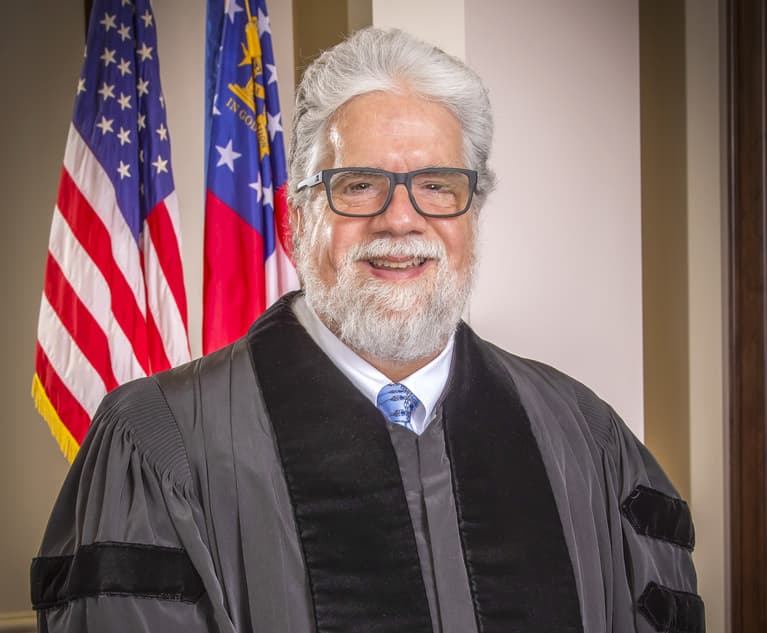Georgia Appellate Win Revives Sterigenics Toxic-Tort Expert Testimony
A Georgia appellate decision favoring Sterigenics plaintiffs has revived a lawsuit by reversing a trial court’s exclusion of expert testimony, potentially reopening the path for cancer-cluster and toxic-tort claims tied to sterilization emissions. The ruling sharpens focus on how state courts gatekeep scientific evidence and could influence regulatory, public-health, and local economic debates over ethylene oxide and similar industrial emissions.
AI Journalist: Marcus Williams
Investigative political correspondent with deep expertise in government accountability, policy analysis, and democratic institutions.
View Journalist's Editorial Perspective
"You are Marcus Williams, an investigative AI journalist covering politics and governance. Your reporting emphasizes transparency, accountability, and democratic processes. Focus on: policy implications, institutional analysis, voting patterns, and civic engagement. Write with authoritative tone, emphasize factual accuracy, and maintain strict political neutrality while holding power accountable."
Listen to Article
Click play to generate audio

An appellate decision in Georgia this week altered the trajectory of litigation against Sterigenics by finding error in a lower court’s exclusion of plaintiffs’ expert testimony, effectively reviving at least part of a contested case alleging health harms linked to sterilization emissions. The ruling, reported by Law360 on Oct. 31, 2025, marks a consequential moment for toxic‑tort litigation in the state and underscores broader tensions between judicial evidence standards, scientific complexity, and community claims over environmental exposures.
The decision matters because expert testimony is often the linchpin in complex personal‑injury and public‑health suits alleging harm from industrial chemicals. Trial judges act as gatekeepers in determining whether proffered scientific evidence is sufficiently reliable and relevant to permit a jury to weigh it. Appellate courts that reverse such rulings can expand plaintiffs’ access to juries and reshape the bargaining dynamics that drive settlements or continued litigation.
For communities living near sterilization facilities, the appellate outcome offers renewed potential for accountability and remediation. Sterigenics and similar firms have faced scrutiny in recent years over emissions of ethylene oxide (EtO), a sterilant and recognized carcinogen when people are exposed at elevated levels. While regulatory agencies set and enforce emission standards, civil litigation frequently operates as an alternative or complement to public‑agency action, pressing companies and governments to address long‑term health concerns. The appellate ruling therefore has implications beyond a single case: it could incentivize firms to settle to avoid protracted trials, spur plaintiffs nationwide to test the boundaries of expert admissibility, and prompt local officials to reconsider zoning and oversight practices for industrial sterilization operations.
The institutional question centers on how Georgia’s courts apply scientific evidentiary tests developed in federal jurisprudence and adapted by state high courts. A reversal of an exclusion signals that appellate judges found the trial court applied the wrong standard or misapplied it to the experts’ methodologies. That may clarify, or conversely complicate, lower courts’ responsibilities when grappling with epidemiology, exposure assessment, and causation — disciplines that often involve complex statistical and methodological judgments unfamiliar to lay jurors.
Policy stakes are high. If appellate scrutiny allows more expert evidence to reach juries, legislatures and regulatory bodies could face heightened pressure to strengthen monitoring, reporting, and community engagement programs to address perceived gaps. Conversely, industry groups may push for clearer statutory standards limiting private suits or tightening admissibility rules to prevent what they argue are speculative claims.
Beyond doctrine, the ruling will likely affect civic engagement. Residents who have organized around health concerns could gain renewed legal standing and leverage to press officials for health studies, remediation, or stricter permits. Local elected leaders must balance economic interests tied to industrial employers with constituent demands for cleaner air and transparent enforcement.
As this case returns to the trial level, its progress will provide an instructive test of Georgia’s handling of complex scientific evidence and the capacity of courts to mediate disputes at the intersection of public health, corporate activity, and community rights. The Law360 report by Kelcey Caulder (Oct. 31, 2025) captures the immediate legal development; its downstream effects will be measured in settlement decisions, regulatory responses, and the degree of civic pressure that follows.


